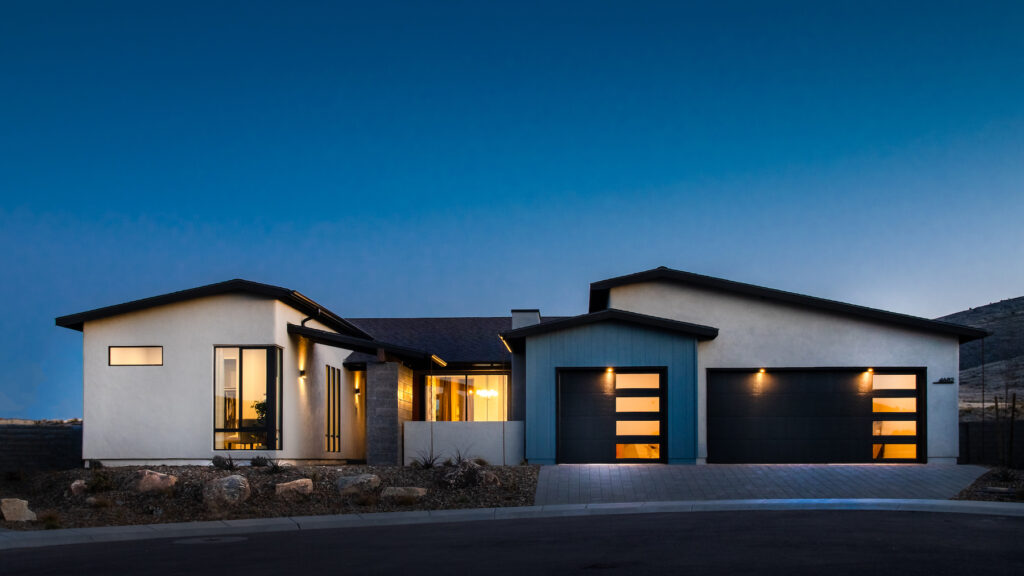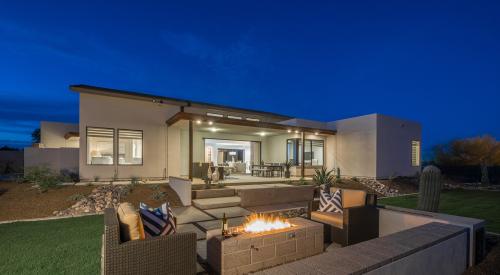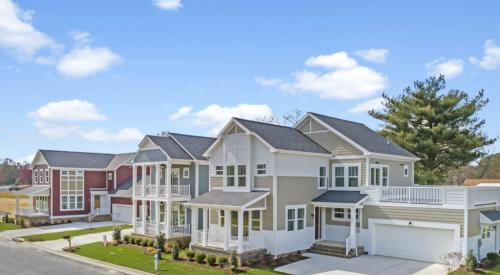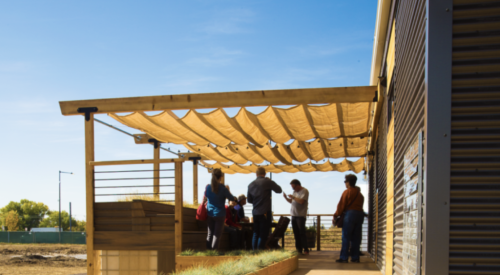For the first half of its 21 years, Arizona’s Mandalay Homes built houses the traditional way. Then, during the Great Recession, the City of Phoenix asked the builder to take part in a program, funded by the federal stimulus package, to learn and apply sustainable, efficient construction practices. In 2012, Mandalay completed its first efficient housing project.
The following year, Mandalay received a Department of Energy Housing Innovation Award for Energy Efficiency. It’s won the award every year since. In November, the builder passed a major milestone: 1,000 zero energy ready homes that can annually produce as much energy as they consume.
At the start of its net zero home building journey, however, David Everson, Mandalay’s owner and CEO, had his doubts about efficient, renewable construction.
“Being a homebuilder for most of my life, I thought it was not practical financially,” Everson recalls. “I learned renewable energy is attainable within normal construction assemblies. You just need to be thoughtful about it.”
For Mandalay, that process starts with a candid assessment of what it wants to build and what the market needs. “Design the product the way you see fit to meet customers’ needs—independent of energy efficiency,” Everson advises. “Follow your heart and head on what you think is the best offering.”
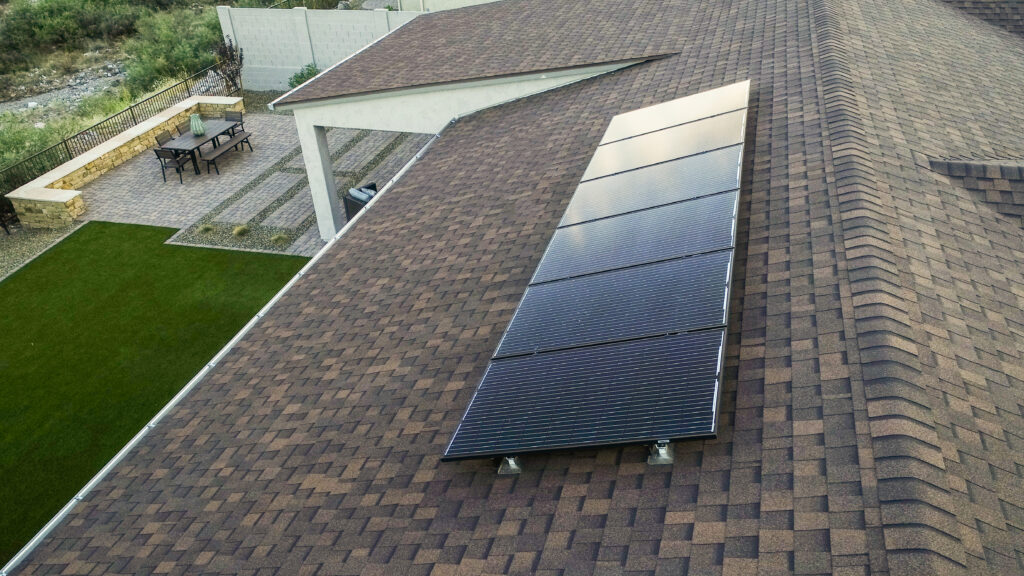
Then turn to technology. Mandalay uses energy-rater software such as Ekotrope and REM/Rate to model its net zero energy ready homes before it builds them. The programs allow you to see how various components, such as mechanicals, insulation, and windows, will affect your homes’ efficiency and cost. For instance, if you plug in the heating and cooling system you plan to use, the program then tells you the operating costs and the Home Energy Rating System (HERS) score (the industry standard for measuring energy efficiency).
“You start working up a recipe unique to your product and climate zone,” Everson says.
RELATED: Nearly 28,000 Zero Energy Units Up-And-Running in North America
Mandalay Homes’ Strategy for Building Net- Zero Ready Homes
Mandalay’s recipe begins with two key ingredients: spray foam insulation that consists of open and closed cell foam, and AeroBarrier insulation, which seals any small cracks and crevices. Using both types of insulation, Mandalay gets its houses as tight as possible.
And that means Mandalay can get exactly the right size equipment to heat and cool its homes. A less efficient home might need an AC unit of 3 to 5 tons; a tight home needs just 1 to 1.5. “So you save money on the mechanical system because you have a tight envelope,” Everson says.
‘Instead of the dirty power that’s consumed by a code-built home, you use clean power that’s produced and stored during the day.’
— David Everson, CEO, Mandalay Homes
Another essential ingredient for Mandalay is a variable-speed heating and cooling system. While a traditional HVAC system has a big power draw every time it kicks on, the variable-speed system draws less amperage and runs more continuously, which also helps extend the life of the solar storage batteries. Plus, the variable-speed system’s lower energy demand means the home needs fewer solar panels and less energy storage. Which makes renewable energy financially more attainable.
Your net zero recipe’s various versions can all be tested in the modeling software. During that process, consider your relationships with your suppliers, Everson advises. Maybe you can get a better price on higher-performing insulation, so you don’t have to spend extra on pricier windows to achieve your desired efficiency. Because Mandalay Homes could use the same variable-speed system in all its homes, it leveraged its purchasing power with its supplier to get the equipment at a lower cost.
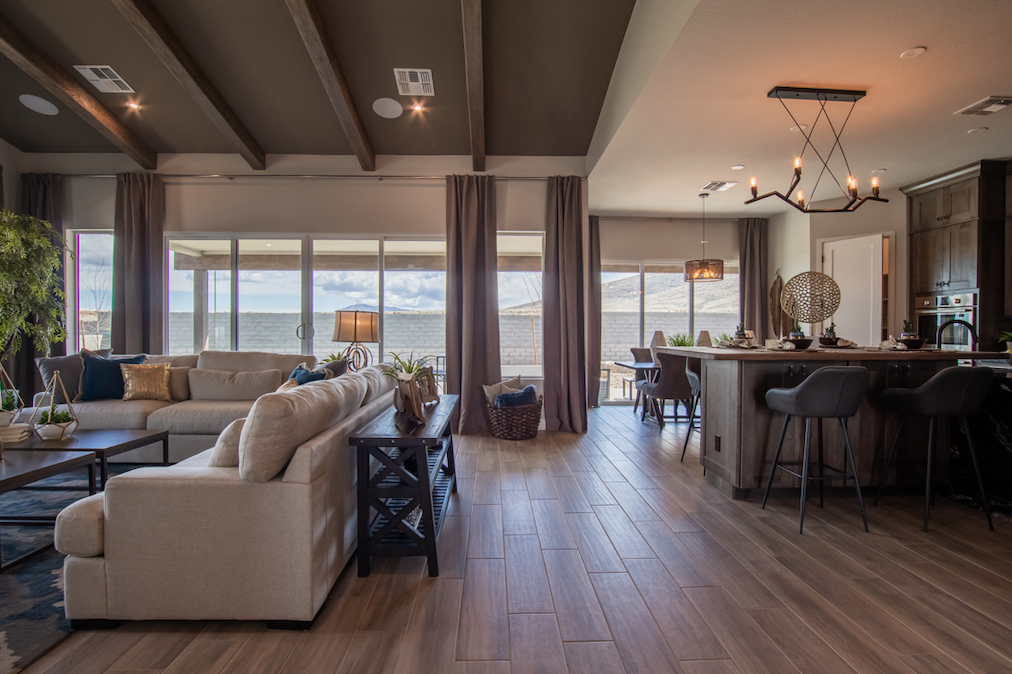
While Mandalay first set its efficiency target of 50 HERS or less, it achieved 42 HERS in its last 500 homes and 27 HERS in its last 100—compared to the code standard of about 70. (The lower, the better.)
How Much Does it Cost to Build to Net-Zero Ready Standards?
Mandalay’s zero energy ready homes come at a 2% to 3% increase in construction costs. But their renewable energy provides the builder with a marketing advantage and the homeowner with energy savings over time—and the ability to live more sustainably.
“Instead of the dirty power that’s consumed by a code-built home, you use clean power that’s produced and stored during the day,” Everson says.
In the future, Mandalay intends to fine-tune its recipe even further. It’s focusing on two main areas of innovation, Everson says: energy management and home assembly.
With energy management, Mandalay wants to build homes that not only provide renewable energy but also smartly manage their energy use on an hourly basis. As Everson explains, “Now we have an unintelligent home performing at a high level but in a static environment. We want it to be more of a dynamic, learning, true energy management system.”
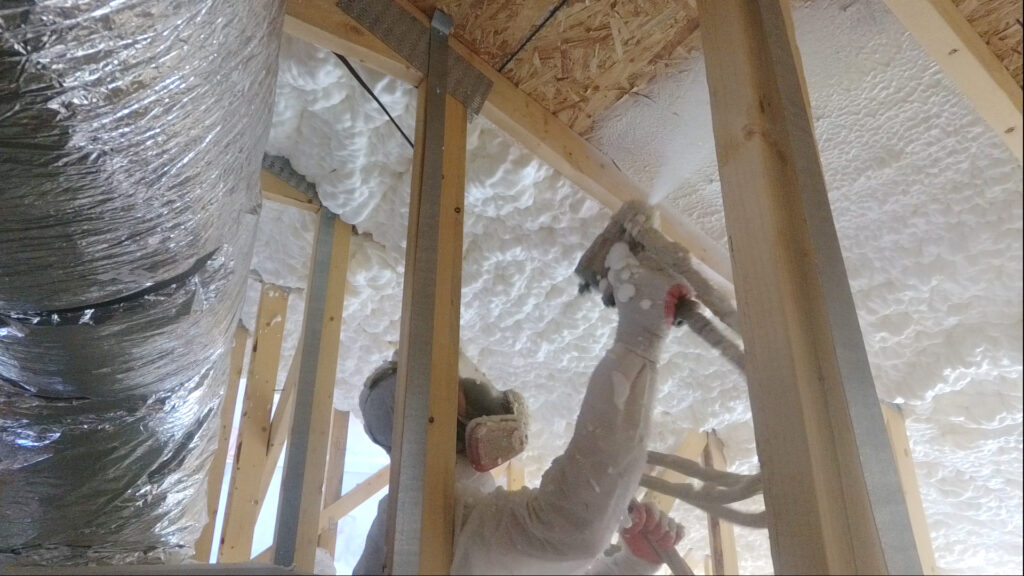
For instance, Mandalay’s houses currently store solar energy during the day and then draw it from the battery during peak hours in the evening. So the battery has to meet any peak-time needs. “A smarter home would use the power more wisely from the grid and stretch the battery,” Everson says. Better energy management also will involve more efficient lighting.
To hit its second target, improved home assembly, Everson points to Mandalay’s partnership with Mosaic Building Group, a Phoenix-based construction technology startup. In September, the two organizations announced a $100 million partnership to build at least 400 homes in northern Arizona.
Together, Mandalay and Mosaic plan to devise step-by-step instructions for tradespeople to build their homes “to get more done with more efficient practices,” Everson says. “We’re trying to figure out how to meet the demands of the market with limited resources. So we’re taking less skilled labor and making them more productive.”
Everson compares it to furniture assembly: “Not many of us can build a chair from scratch,” he says, but most of us can put together an Ikea chair with the right instructions in hand.
View our webinar on the subject: "Best Practices for Building Net Zero Ready Homes."


